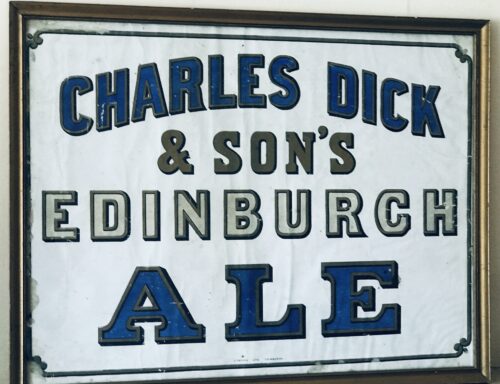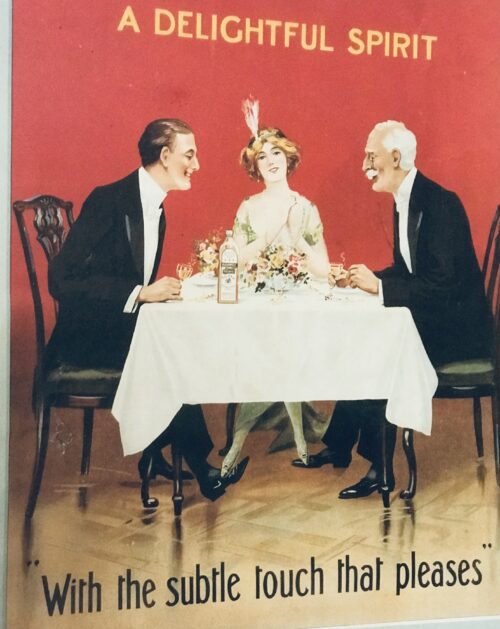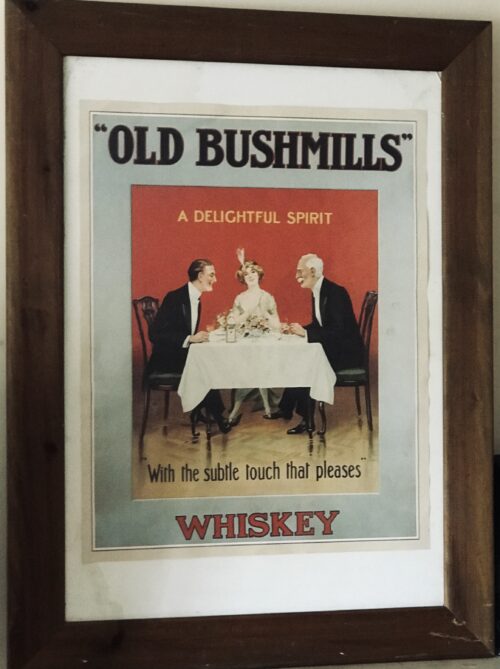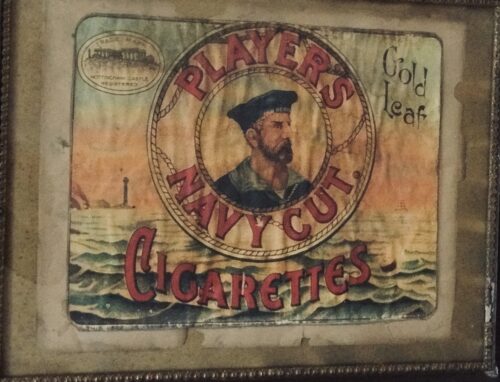Very well manufactured Castiron Toucan replica.
Dimensions :20cm x 10cm x 8cm 1.5kg
The legendary Guinness Toucan goes back to 1935 and the advertising firm S.H. Benson. Artist John Gilroy had been recently hired, and Dorothy Sayers, a famous crime writer and playwright, wrote advertising copy for the company.
For nearly two centuries of existence, the brewery had almost no need to formally advertise, allowing word-of-mouth to sell the beer, and sell it did. By the late 19th century, Guinness was one of the top three breweries between Britain and Ireland. In 1862, the company adopted an Irish harp as their logo and trademarked it in 1875. However, by the late 1920s, sales were declining, and in 1929, Rupert Guinness, then chair of the company, ran the first-ever Guinness print ad with the slogan “Guinness is good for you.” The very next year, the brewery hired advertising firm S.H. Benson. It was then, in 1930, that the story of the Guinness toucan began.
The man responsible for the iconic bird and his animal companions is the English illustrator and draftsman John Gilroy. He was born in 1898 in Newcastle upon Tyne into a family of eight children, and his father, William, was a landscape painter. From a young age, Gilroy began copying the drawings in magazines, and it was quickly evident he would follow in his father’s professional footsteps.
By 15, he was a cartoonist for the local newspaper. He won a scholarship to art school, and although World War I interrupted his studies, he entered London’s Royal College of Art in 1919. While he was still a student, he received his first commission for commercial art—a promotional pamphlet for the Hydraulic Engineering Co. Not long after graduating, Gilroy began working for S.H. Benson, where he would eventually work on Guiness.
 His first work with the firm was on campaigns for Skipper Sardines and Virol (a brand of malt extract). In his early years at Benson, he and his colleagues created clever characters to make their designs memorable: Baron de Beef, Signor Spaghetti, Miss Di Gester. All these playful characters likely primed Gilroy for the fun and whimsical designs he would eventually draw for Guinness in his 35 years working with the company.
In the early 1930s S.H. Benson boasted an impressive staff of creatives beyond John Gilroy; the aforementioned Dorothy Sayers, now famous as a crime writer and poet, wrote copy for the agency. When Guinness approached the firm, they had an interesting request: the final advertising campaign should not be too much to do with beer, despite the fact that it was advertising—well—beer. They thought it would be vulgar. Instead, they preferred something that appealed to families and that highlighted the purported health benefits of the brew.
They asked Gilroy to draft an ad showing a family drinking Guinness, but no one could seem to agree on what the family should look like, nor how they should be presented. Luckily, it was precisely family that led Gilroy to the particular idea that eventually spawned Guinness’s most famous ad campaigns. The artist had recently taken his son to the circus, recounts Guinness archive manager Fergus Brady, and had watched a sea lion balancing a ball on its nose. He realized how fun it would be to draw a sea lion balancing a pint of Guinness on its nose, and pitched the idea to Guinness. From there the series expanded to an entire menagerie. Gilroy drew ostriches, bears, pelicans, kangaroos, and of course, the toucan.
Paired with Sayers’s inventive copy, the ads took off. In her most clever ad, she plays on the toucan / two-can homophone and on the idea that drinking Guinness offers a range of health benefits: “If he can say as you can / Guinness is good for you / How grand to be a Toucan — / Just think what Toucan do.” The illustration features a smiling toucan perched next to two shining pint glasses full of Guinness stout.
His first work with the firm was on campaigns for Skipper Sardines and Virol (a brand of malt extract). In his early years at Benson, he and his colleagues created clever characters to make their designs memorable: Baron de Beef, Signor Spaghetti, Miss Di Gester. All these playful characters likely primed Gilroy for the fun and whimsical designs he would eventually draw for Guinness in his 35 years working with the company.
In the early 1930s S.H. Benson boasted an impressive staff of creatives beyond John Gilroy; the aforementioned Dorothy Sayers, now famous as a crime writer and poet, wrote copy for the agency. When Guinness approached the firm, they had an interesting request: the final advertising campaign should not be too much to do with beer, despite the fact that it was advertising—well—beer. They thought it would be vulgar. Instead, they preferred something that appealed to families and that highlighted the purported health benefits of the brew.
They asked Gilroy to draft an ad showing a family drinking Guinness, but no one could seem to agree on what the family should look like, nor how they should be presented. Luckily, it was precisely family that led Gilroy to the particular idea that eventually spawned Guinness’s most famous ad campaigns. The artist had recently taken his son to the circus, recounts Guinness archive manager Fergus Brady, and had watched a sea lion balancing a ball on its nose. He realized how fun it would be to draw a sea lion balancing a pint of Guinness on its nose, and pitched the idea to Guinness. From there the series expanded to an entire menagerie. Gilroy drew ostriches, bears, pelicans, kangaroos, and of course, the toucan.
Paired with Sayers’s inventive copy, the ads took off. In her most clever ad, she plays on the toucan / two-can homophone and on the idea that drinking Guinness offers a range of health benefits: “If he can say as you can / Guinness is good for you / How grand to be a Toucan — / Just think what Toucan do.” The illustration features a smiling toucan perched next to two shining pint glasses full of Guinness stout.
 Gilroy even created toucan ads specifically for the American market with the birds flying over landmarks like the Statue of Liberty, Mount Rushmore, and the Golden Gate Bridge—always carrying two pints on their beaks. Sadly, Guinness never approved and ran the ads.
Over the years, Gilroy created nearly 100 advertisements and 50 poster designs for Guinness. Though he left S.H. Benson as an in-house artist in the 1940s, he continued to freelance for them and continued to create the beloved Guinness zoo ads, crafting new scenarios for his Guinness-loving animals and their beleaguered zookeeper.
Other vintage Guinness ads from the time feature simpler jingles and catchphrases. “My goodness—my Guinness” often features an animal stealing a man’s pint in comical fashions—an ostrich swallows it, a kangaroo hides the bottle in its pouch, a crocodile holds the pint between his massive jaws, and so on. In another, a smirking tortoise carries a pint on its back under the text, “Have a Guinness when you’re tired.” A man pulls a cart while his horse relaxes and goes for a ride—“Guinness for strength.” There is a playfulness to all of them. Even the ad in which a man is being chased by a lion feels funny—of course, the lion is chasing the man not to eat him, but to steal his beer. The lion is smiling, his tongue lolling out of his mouth as he runs, and we’re in on the joke: he’ll get the Guinness in the end, and the man is panicking not to save his skin, but to save his beer.
Gilroy even created toucan ads specifically for the American market with the birds flying over landmarks like the Statue of Liberty, Mount Rushmore, and the Golden Gate Bridge—always carrying two pints on their beaks. Sadly, Guinness never approved and ran the ads.
Over the years, Gilroy created nearly 100 advertisements and 50 poster designs for Guinness. Though he left S.H. Benson as an in-house artist in the 1940s, he continued to freelance for them and continued to create the beloved Guinness zoo ads, crafting new scenarios for his Guinness-loving animals and their beleaguered zookeeper.
Other vintage Guinness ads from the time feature simpler jingles and catchphrases. “My goodness—my Guinness” often features an animal stealing a man’s pint in comical fashions—an ostrich swallows it, a kangaroo hides the bottle in its pouch, a crocodile holds the pint between his massive jaws, and so on. In another, a smirking tortoise carries a pint on its back under the text, “Have a Guinness when you’re tired.” A man pulls a cart while his horse relaxes and goes for a ride—“Guinness for strength.” There is a playfulness to all of them. Even the ad in which a man is being chased by a lion feels funny—of course, the lion is chasing the man not to eat him, but to steal his beer. The lion is smiling, his tongue lolling out of his mouth as he runs, and we’re in on the joke: he’ll get the Guinness in the end, and the man is panicking not to save his skin, but to save his beer.
 The ads ran primarily in the U.K. and in the 1930s and 1940s were immensely popular—likely the cheerful, cheeky animals and bright colors provided a small antidote to the horrors going on in Europe at the time. In 1939, all troops in the British Expeditionary Force in France received a bottle of Guinness with their Christmas dinner.
The company remained committed to adding a touch of whimsy to their generally solid and forward-thinking business practices. To celebrate Guinness’s bicentennial in 1959, the company dropped 150,000 embossed bottles containing Guinness-related information and paraphernalia into the Atlantic Ocean. It is the same year, as well, that Guinness employed scientists to create the Guinness Draft we know today by pairing nitrogen gas and carbon dioxide—it is that combination that gives the beer its prized silky texture. In in 1963 and 1965, Guinness opened breweries in Nigeria and Malaysia, respectively, cementing the company’s global reach and impact.
As the company modernized, so too did their advertising strategies. In 1982, the Guinness brewery switched ad firms and stopped running the zoo-themed ads—the toucan and its friends were no longer considered effective advertising techniques. However, nostalgia for the Guinness toucan remained, and the company has released limited-edition cans and merchandise featuring the original Gilroy drawings. In 2017, the 200th anniversary of Guinness in America, they released a number of decorative itemsimprinted with the image of the two-pint-touting toucans flying over Mount Rushmore. The image of Gilroy’s toucan still immediately brings Guinness to mind, and it remains an immensely memorable mascot of the world’s premier dark beer.
The ads ran primarily in the U.K. and in the 1930s and 1940s were immensely popular—likely the cheerful, cheeky animals and bright colors provided a small antidote to the horrors going on in Europe at the time. In 1939, all troops in the British Expeditionary Force in France received a bottle of Guinness with their Christmas dinner.
The company remained committed to adding a touch of whimsy to their generally solid and forward-thinking business practices. To celebrate Guinness’s bicentennial in 1959, the company dropped 150,000 embossed bottles containing Guinness-related information and paraphernalia into the Atlantic Ocean. It is the same year, as well, that Guinness employed scientists to create the Guinness Draft we know today by pairing nitrogen gas and carbon dioxide—it is that combination that gives the beer its prized silky texture. In in 1963 and 1965, Guinness opened breweries in Nigeria and Malaysia, respectively, cementing the company’s global reach and impact.
As the company modernized, so too did their advertising strategies. In 1982, the Guinness brewery switched ad firms and stopped running the zoo-themed ads—the toucan and its friends were no longer considered effective advertising techniques. However, nostalgia for the Guinness toucan remained, and the company has released limited-edition cans and merchandise featuring the original Gilroy drawings. In 2017, the 200th anniversary of Guinness in America, they released a number of decorative itemsimprinted with the image of the two-pint-touting toucans flying over Mount Rushmore. The image of Gilroy’s toucan still immediately brings Guinness to mind, and it remains an immensely memorable mascot of the world’s premier dark beer.
Arthur Guinness started brewing ales in 1759 at the St James Gate Brewery,Dublin.On 31st December 1759 he signed a 9,000 year lease at £45 per annum for the unused brewery.Ten years later, on 19 May 1769, Guinness first exported his ale: he shipped six-and-a-half barrels to Great Britain before he started selling the dark beer porter in 1778. The first Guinness beers to use the term were Single Stout and Double Stout in the 1840s.Throughout the bulk of its history, Guinness produced only three variations of a single beer type: porter or single stout, double or extra and foreign stout for export. “Stout” originally referred to a beer’s strength, but eventually shifted meaning toward body and colour.Porter was also referred to as “plain”, as mentioned in the famous refrain of Flann O’Brien‘s poem “The Workman’s Friend”: “A pint of plain is your only man.”
Already one of the top-three British and Irish brewers, Guinness’s sales soared from 350,000 barrels in 1868 to 779,000 barrels in 1876.In October 1886 Guinness became a public company, and was averaging sales of 1,138,000 barrels a year. This was despite the brewery’s refusal to either advertise or offer its beer at a discount. Even though Guinness owned no public houses, the company was valued at £6 million and shares were twenty times oversubscribed, with share prices rising to a 60 per cent premium on the first day of trading.
The breweries pioneered several quality control efforts. The brewery hired the statistician William Sealy Gosset in 1899, who achieved lasting fame under the pseudonym “Student” for techniques developed for Guinness, particularly Student’s t-distribution and the even more commonly known Student’s t-test.
By 1900 the brewery was operating unparalleled welfare schemes for its 5,000 employees. By 1907 the welfare schemes were costing the brewery £40,000 a year, which was one-fifth of the total wages bill. The improvements were suggested and supervised by Sir John Lumsden. By 1914, Guinness was producing 2,652,000 barrels of beer a year, which was more than double that of its nearest competitor Bass, and was supplying more than 10 per cent of the total UK beer market. In the 1930s, Guinness became the seventh largest company in the world.
Before 1939, if a Guinness brewer wished to marry a Catholic, his resignation was requested. According to Thomas Molloy, writing in the Irish Independent, “It had no qualms about selling drink to Catholics but it did everything it could to avoid employing them until the 1960s.”
Guinness thought they brewed their last porter in 1973. In the 1970s, following declining sales, the decision was taken to make Guinness Extra Stout more “drinkable”. The gravity was subsequently reduced, and the brand was relaunched in 1981. Pale malt was used for the first time, and isomerized hop extract began to be used. In 2014, two new porters were introduced: West Indies Porter and Dublin Porter.
Guinness acquired the Distillers Company in 1986.This led to a scandal and criminal trialconcerning the artificial inflation of the Guinness share price during the takeover bid engineered by the chairman, Ernest Saunders. A subsequent £5.2 million success fee paid to an American lawyer and Guinness director, Tom Ward, was the subject of the case Guinness plc v Saunders, in which the House of Lords declared that the payment had been invalid.
In the 1980s, as the IRA’s bombing campaign spread to London and the rest of Britain, Guinness considered scrapping the Harp as its logo.
The company merged with Grand Metropolitan in 1997 to form Diageo. Due to controversy over the merger, the company was maintained as a separate entity within Diageo and has retained the rights to the product and all associated trademarks of Guinness.

John Gilroy, illustrator of some of Guinness’s most well-known advertisements.

With John Gilroy’s illustrations and Dorothy Sayers’s copy, the Guinness toucan ads were an immediate hit. (Guinness)

Guinness coasters featuring the menagerie of John Gilroy’s advertisements. (Guinness)




























